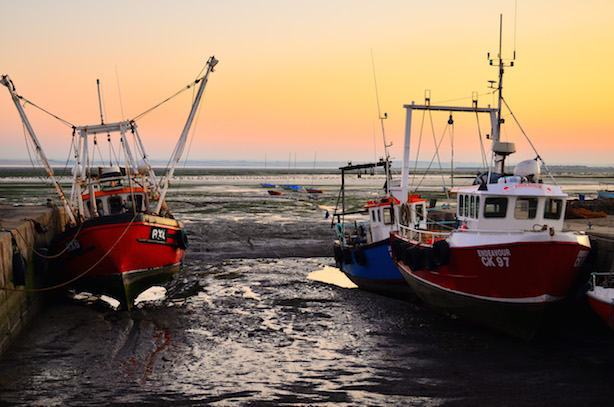
This article was originally posted as an op-ed on Triple Pundit as part of their ongoing Sustainable Seafood channel.
Exposés of deception and abuse in food supply chains have become disturbingly routine. Whether we’re hearing about pink slime or horsemeat passed off as beef, the news is consistently unsettling: We can’t trust what we’re eating.
Seafood is no exception to this pattern. More than one-third of our seafood is mislabeled in North America. And upwards of 24 million tons of seafood is caught and sold illegally every year. A just-published report from University of British Columbia estimates that up to 26 percent of all wild seafood imports to the U.S. is so-called pirate fish!
Beyond what that deception may mean for your health, it is also a window to other more systemic challenges, including pirate fishing, human trafficking, and widespread fraud and corruption. While news stories easily generate outrage for the more personal aspect of these offenses, cultivating the attention span and call-to-action that targets change at the deeper, underlying problems is understandably harder.
These problems can’t be fixed simply by the decision of a few consumers to “eat local.” We need to rebuild the systems and behaviors of the global interconnected brokers, corporations and governments that touch your food before it hits your plate. Pulling that off will require better data.
What do we mean by better data? Better data means going beyond murky definitions of traceability systems to verified data. This is not a foreign idea to supply chains: Couple product data with time and location stamps, and an auditable trail of information is produced — one that could be demonstrably free of illegal fish, for example. Here’s a look at the benefits better data could make possible, for businesses and for fish.
Better data means better ways to fight pirate fishing
We need some data about fish before it’s landed. Much of illegal fishing happens in international waters in vast areas that are impossible to police and monitor by boat. New technology allows remote surveillance by integrating satellite data with boat transponders to spot suspicious activity.
Windward, a technology company that develops unique algorithms to scan for these suspicious patterns, has been able to catch legal vessels pulling alongside pirate boats while at sea to offload illegal fish. That kind of data, coupled with widespread endorsement of the Port State Measures Agreement, which the U.S. ratified last week, would give ports the ability to refuse docking privileges to any boat flagged for pirate behavior. A better way to spot illegal fish in the supply chain is to make sure it doesn’t get into legitimate channels in the first place.
Better data is better for business
One of the entrepreneurs Future of Fish supports, Tom Kraft of Norpac, has found that implementing systems to track fish better also helped him track his business better. As a result of traceability data that connects to his core operating systems, he’s been able to reduce overtime costs by 80 percent, decrease his cost of goods by 2 percent, and use data-driven management to assist with purchasing decisions and increasing efficiency. Meanwhile, his customers get greater transparency and longer product shelf life.
While the return on investment in these systems will vary, the core reason to choose them is not merely to comply with tracking requests for environmental reasons, but because these systems provide clear business wins.
Not just certification; verified data
Certification systems are a great start. They can assure the sustainability of fish, and they typically develop separate chain of custody programs that claim to offer reliable tracking and labeling. But these chain of custody programs reside within an industry that delivers a dismal track record of one-third mislabeling, and these programs touch just a small percentage of fish. That leaves the bulk of the world’s fish as “mystery fish.” That low-data standard doesn’t filter out the 25 percent of illegal fish, nor draw meaningful distinctions between local fish, which might not be certified but could be more responsible than fish shipped in from a farm in China.
Moreover, the whole trick of setting market-driven change in motion is to align better behavior in the supply chain with better margin. Certified fish doesn’t consistently drive that alignment because consumers care about more than just science and harvesting gear. They want “local,” “fresh,” “convenient” and “healthy,” as well — data not comprised by most certification definitions. Better data allows these other value points to be seen, rewarded and ideally used as additional enticements to buy responsibly harvested fish.
Many supply chains relying on sensitive natural resources (such as timber) are recognizing that the supply chain itself must take greater responsibility for broader implementation of better information practices. It’s time for the seafood industry to join that list.
What’s your role?
What can you do? Well, if you’re a company that buys or sells fish, or a technology company that serves the seafood industry, you can apply to join Future of Fish’s Technology for Transparency pod. We’re hosting several collaborations over the next 18 months aimed at making the purchase and implementation of better data systems easier.
If you’re a consumer, pay attention to the names of retailers who made Greenpeace’s list of best practices in seafood sourcing. And if you’re an IT professional, perhaps consider turning your talents to help end marine extinction in your lifetime. The ocean needs you.
Image credit: Flickr/Garry Knight



